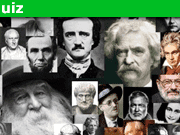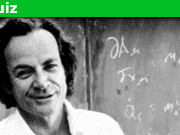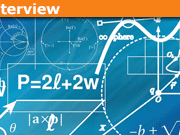Interview with Theoretical Physicist Michio Kaku
We are happy to have Michio Kaku answer some questions from the community. This interview was originally held in 2004. Michio Kaku is an American theoretical physicist, futurist, and popularizer of science (science communicator). He is a professor of theoretical physics in the City College of New York and CUNY Graduate Center. Kaku has written several books about physics and related topics, has made frequent appearances on radio, television, and film, and writes online blogs and articles. – wikipedia
What do you think about the whole deal with the Hubble Space Telescope? Are you siding with leaving it up as long as it can (estimated at around 2012), or bringing down what many consider US culture and letting it burn up in the atmosphere? Would you want replacement for Hubble or do you think its fine to stick to ground-based observation?
Dr Michio Kaku:
I think we should salvage it. There are many breakthroughs in land based telescopes that make some aspects of the Hubble obsolete but one shuttle mission would be sufficient to salvage it. A robotic mission might not work but humans can certainly repair it. It would be a shame to lose a billion dollar work horse. But advances in laser/assisted telescopes, but the new giant telescopes make the Hubble less revolutionary than before’
Hello Dr. Kaku: I have a basic understanding of particles but I am perplexed about how they form from the big bang. Why are they so small and keep getting smaller and smaller?’;
Dr Michio Kaku:
No, the big bang produced a large flux of particles and these particles keep on interacting, rather than getting smaller. For example, there was probably a matter/anti-matter collision at the big bang which created a huge flux of gamma rays and the particles we see in nature including us are a tiny remnant of that explosion.
Do you think that string theory will ever be testable? If so, how many years will it be?
Dr Michio Kaku
Yes! Contrary to the critics string theory can be tested. First, in 2011 LISA will be sent into orbit It will have 3 satellites connected by 3 laser beams about 3 million miles across. Any gravity wave which hits LISA will cause an interference which can be detected. LISA should be able to confirm or disprove inflation and various string-type cosmologies which have been proposed. Also, in 2007 the LHC will be turned on which may detect particles or super particles, which are higher octaves of the string. Also, dark matter which makes up 23% of the universe is probably made of particles. Any day, someone may find dark matter in their lab detector. LISA may give direct evidence for strings while the LHC and dark matter experiments may give indirect proof of string theory. So the cynics do not understand how advanced the experiments really are. Plus, many groups are looking for experimental evidence of higher dimensions, such as at Unif. of Colorado. But so far, these experiments have not found any definitive proof of the existence of higher dimensions.
In the book “Visions”, you were very optimistic about the future of science and technology. Firstly, have you lost this optimism about the future or are you still looking forward to the future? Secondly, are you disappointed with the current state of technology in the year 2004?’;
Dr Michio Kaku
In my o’book Visions I made several predictions all of which are being realized. So far, the predictions I made are all becoming true. The predictions are up to 2020, and some even to 2050 so I expect that some predictions will eventually fail, but so far all the predictions are holding. This is because, for the book, I interviewed 150 top scientists, who are inventing the future, so it was, in some sense easy to make correct predictions because I was interviewing the people who are making the future come true.
and what do you think of the current state of Technology in 2004?
Dr Michio Kaku
Its hard to predict year by year so, in the book, I made predictions every five years or so. At any particular year, its hard to show that there are big breakthroughs. This month, for example, for the first time in history doctors in Germany took a 7 year old girls stem cells and grew 19 sq. inches of bone, enough to cover a huge hole in her skull. She lacked large chunks of her skull due to a big accident, and had to wear a helmet even though her brain could be seen right through all the large cracks in her skull. But human stem cells were grown that finally covered her skull, which is a real breakthrough in stem cell research.
When might the next big breakthrough in String Theory arrive?
Dr Michio Kaku
Every 10 years or so, there is a huge breakthrough in string theory. The theory was born in 1968 but in 1984 it was shown to be free of any inconsistencies. Then in 1994 it was shown that there is a higher 11 dimensional theory called M theory so now, after 10 more years, we should be due for another breakthrough, I hope. The theory is quite hard, and it is smarter than us It is truly amazing that the theory has such deapth and is so full of mathematical richness. Unfortunately, we are still in the process of finding out where all these miracles come from. Remember, wrong theories are usually quite shallow and ultimately sterile while string theory seems to be inexaustible.
Dr. Kaku, do you still believe that it is impossible for us to visualize in four or more dimensions? I am thinking of your statement on page ten of hyperspace.
Dr Michio Kaku
No. We cannot visualize higher dimensional objects because our brains only evolved in three dimensions but computers have no problem. As a child I would try to leap into hyperspace but always failed This convinced me that our brains really are not developed enough to manipulate higher dimensions. When I write a paper in 10 or 11 dimensions, I try to keep the diagrams to a minimum and just use equations because it takes too long to try to use aids and tricks to visualize 10 or 11 dimensions.
What is the difference between hyperspace and the multiverse, or are they one in the same?
Dr Michio Kaku
They are different. Hyperspace simply means dimensions beyond our own 4 D space-time. The multiverse simply means parallel universe. They are related in that a multiverse can exist within hyperspace. We can have, for example, floating 4D bubbles in a 11D multiverse. Thus, the multiverse idea can be embedded within hyperspace. At present, there is no experimental proof of either concept, however.
Dr Kaku, what is your advice to aspiring mathematicians and physicists?’;
Dr Michio Kaku
The most important piece of advise is to keep your sense of wonderment alive. You have to have a lot of math to become a physicist but the math is only a tool to visualize the physical picture. That is the difference between math and physics. Physics is based on a handful of physical principles such as relativity and the quantum principle. Thus, just a handful of principles drive the entire universe. But to describe these principles and work out their details, we need math. Hence, math is book keeping to keep track of the principle. As a physicist, you have to keep that picture or principle firmly in mind and share in the wonderment over that principle and not be bogged down in the algebra. In sum, we always have to keep that wonderment alive, but not get bogged down in the math although we need plenty of it. As a child, I read a lot of science fiction, but I realized that sooner or later I would become a crack pot always talking about higher dimensions or time travel, unless I seriously learned the math’ I never regretted it. Now, I get tons of emails from people who are still fascinated by science fiction. but never had the opportunity or dedication to learn the math. In other words, the language of nature is math. We can share in the wonderment over nature’s beauty but eventually we have to speak her language.
Which particles would you hope to see in the LHC experiments?
Dr Michio Kaku
I hope we find dark matter. Dark matter, which makes up 23% of the universe is probably made of photinos which are a higher excitation of the photon. Most of the universe is made of dark matter and dark energy. The higher elements only make up of the universe. Hence, I hope the LHC discovers the Higgs Boson, the last missing piece of the standard model, plus dark matter particles. However, these particles are neutral and hence leave no tracks in our instruments and hence we can only find them when they collide with charged particles. Remember, the LHC will be turned on in just a few more years.
Why is 2005 considered the ‘World Year of Physics’?
Dr Michio Kaku
Because in 1905 Einstein discovered special relativity. It was a miracle year, like when Newton was 23 years old and discovered calculus, the binomial theorem and the universal law of gravity in one year. In 1905, Einstein introduced the photon got special relativity proved the existence of atoms and got E = mc squared all in one year while he was unemployed as a physicist (He was working as a lowly clerk in the Bern patent office).
I find Physics fascinating, but my physics teacher is ridiculously boring. Do you have any advice on how I keep interested in my Physics class rather than just zoning out?
Dr Michio Kaku
My own physics teacher was also boring Almost all physicists I know maintained their interest in physics in spite of their physics teacher. Usually, the physics teacher is someone who teaches something else and, at the last minute, gets assigned to teach physics so the fire, determination enthusiasm, are all missing. I have also interviewed many physicists including Nobel laureates and they tell me that at age 10 or so, they got hooked by physics’ but usually for some other reason than classroom work For many, it was a visit to the planetarium working with a telescope or gyroscope, or compass, or working with a mentor. For Einstein, it was playing with a compass and having a close mentor. For Nobel Laureate Steve Weinberg it was getting a chemistry kit. For Enrico Fermi, it was playing with a gyroscope. For Nobel Laureate Isadore Rabi, it was reading an astronomy book. In each case, it was fascination with a device or talking to a mentor rather than school work that led them to a life in physics. So don’t get discouraged if you know more than your physics teacher, or if your physics teacher is boring. Its a test of a budding physicist to be in love with physics even if our acquaintances are not.
On another note, what do you think of the experimental results from Super Kamiokonde that indicate that neutrinos have mass and do you see any signs that theoretical physics is catching up with explaining those results (and perhaps coming up with a more general method for theoretically predicting elementary particle masses)?
Dr Michio Kaku
Actually, the neutrino experiments are not very surprising. For the past 30 years, physicists have tried to go beyond the standard model, with mass-less neutrinos by adding masses and different breaking schemes. So the announcement that the neutrino has mass was not very surprising to a theorist because we had already worked out the math decades ago. The problem with the standard model is that is too successful. Hence, for the past 30 years, we have had to speculate on tiny, tiny deviations from the standard model, and neutrino mass was the obvious candidate so massive neutrinos are well understood.
Are you working on any new books?
Dr Michio Kaku
I just finished writing a new book, due this January called Parallel Worlds. Doubleday is the publisher.’ It deals with the latest in cosmology, the multiverse parallel universes and ends with a highly speculative idea. Since the universe will probably die in a Big Freeze, according to the latest data it means that all intelligent life will also necessarily die when the universe dies because no machine can operate at near absolute zero. Hence, my attitude is that billions to trillions of years from now any advanced civilization facing is the Big Freeze will have to leave the universe. This means that a Type III civilization, or may be a Type IV civilization, may have enough energy to master the Planck energy which the energy at which space time becomes unstable. This means wormholes and baby universes open up at that fantastic energy. Hence, any advanced civilization, facing the Big Freeze may be forced to reach the Planck energy and drill a hole in space and leave our universe in a hyperdimensional lifeboat to another warmer universe. The book comes out in 2 weeks and I am going on a 2 week book tour in January and England to discuss the book. We will post the schedule of cities where I will be speaking on my web site www.mkaku.org.’ So hopefully Parallel Worlds will introduce the public to the concept of M theory the big freeze the multiverse, and perhaps leaving the universe.
How would you suggest for a student to properly learn calculus? Would you recommend classic books such as Courant, Apostol, or Spivak, or some of the newer books?
Dr Michio Kaku
Personally, I found that the newer books are sometimes not the best books to learn from. For example, the first book on physics or calculus should be a cook book. Not elegant, but very useful for learning purposes. Later in life, we can learn from more sophisticated books. For example, Nobel laureate Richard Feynman wrote a Freshman physics textbook which was very elegant. However, it was a disaster for the students. Most students, I recall, failed the course or did incredibly bad at Cal Tech. Hence, the best book to read for a beginner is a cook book that simply presents the problems and solutions, rather than advanced books, like Feynmans book, which are elegant, beautiful, and a work of art but a disaster when it comes to teaching freshman. The only people who benefited from Feynmans’ book were physics professors who already knew the material but needed someone to present the most elegant and beautiful approach. So, for beginners, I suggest a cook book that presents all the rules and recipes, rather than an elegant book which is so beautiful it is useless for a beginner.
How would one get a deeper understanding about quantum physics? I took a graduate class on it but some concepts still elude me.
Dr Michio Kaku
Don’t fear. Even profs. of physics are still confused by it. As Niels Bohr once said, anyone who is not shocked by the quantum theory does not understand it. As Feynman once said, the quantum theory is totally absurd, but that’s the way the universe is. As a series of rules, written down by Heisenberg and Schrodinger, quantum theory is actually easy. Its just a second order differential equation. But the meaning of this equation has profound implications. Even today, physicists debate the many worlds theory, decoherence Wigner’s friend, etc. At present, there is NO philosophy accepted by all physicists for the quantum theory. In my book, Parallel Worlds, I devote a whole chapter to the various theories that have been proposed, but I think the leading theory right now is decoherence/many worlds. Decoherence says that, if you have a dead cat and a live cat simultaneously in a box describing the same cat then the two cats decohere from each other hence the cat really is dead or alive, but in different universes. Since we do not know which universe is the preferred universe, we have to live with the fact that, say. 50% of the time the cat is dead and 50% of the time the cat is alive and hence the universe splits in half into two separate universes. Each universe is perfectly well behaved, and people in that universe think their universe is the correct one but there are an infinite number of such universes. So even today, 75 years after the quantum theory was introduced, we are still debating the meaning of Schrodinger’s cat. See my book for more details, and see my web site for updates.
That wraps up our event for tonight. We’d like to thank Dr. Kaku for stopping by. Read part 2 here.
I have a BS in Information Sciences from UW-Milwaukee. I’ve helped manage Physics Forums for over 22 years. I enjoy learning and discussing new scientific developments. STEM communication and policy are big interests as well. Currently a Sr. SEO Specialist at Shopify and writer at importsem.com









Leave a Reply
Want to join the discussion?Feel free to contribute!